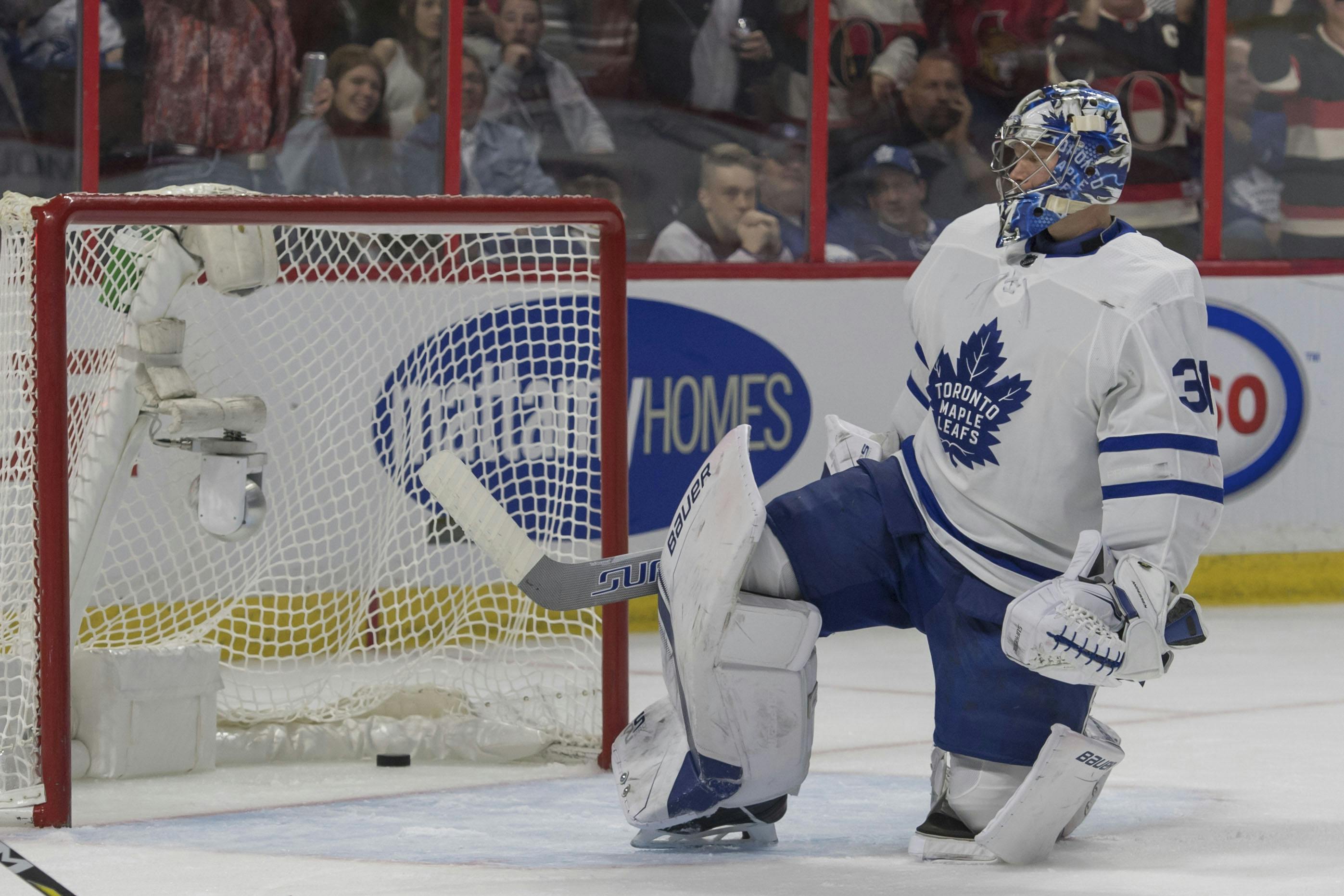Making sense of Andersen’s struggles

(Editor’s note: Despite not wanting to talk about it, Brayden has an extensive junior playing career and knows a little bit more than most of us about playing in net. Here are his thoughts on #31 in Blue.)
Frederik Andersen has allowed 24 goals through 7 games this year. I combed through them all looking for some common themes.
I’ll preface this by saying there’s a fine line between appearing poised, patient, and allowing the play to come to you, and looking flat out lazy. Freddy’s a goalie who, when he’s on, is on the right side of that line. When he’s not, we get some goals like these…

We can see his stick create some chaos as Rielly was trying to break out and his lack of said stick in his hand hindering his ability to corral the rebound or bat it into the corner. But why doesn’t he come out to smother the puck? He tracks the puck out of Gardiner’s skate but just waits on the goal line for Toews to beat him with it. It’s hard to rag on a guy who doesn’t have a piece of his equipment for not making a split second decision that could’ve prevented a goal, but it’s part of a disturbing trend that rears its head whenever Andersen goes on one of his 6 or 7 game slumps.

Another goal that’s not entirely his fault but some basic fundamentals could’ve given him a better chance at getting in front of it. It was a perfect tip into the spot where his catching hand couldn’t be, don’t get me wrong. If he manages to stay compact, drop into his butterfly instead of flopping onto his stomach while reaching up, he’s able to just tip his cap to Zuccarello.



Those three all have a common theme between them. Go ahead and look for it.
If you said “screened goals”, you’re half right. What’s important is how these screened goals are going in. Andersen’s caught looking to the left of screens and it appears teams are picking up on it. It’s easy to discredit these as great plays and shots, which they are. There’s a deeper level there though.
If teams know what you’re going to do before you do it, it becomes very easy to exploit and practice executing on. It’s basically everything that scouting other teams is designed for, taking the decision making out of the players’ hands enabling them to perform better and faster. It’s one thing to have to look around a screen (which I’m not convinced 6’4 Andersen does) and the shooter has to evaluate what part of the net’s open, but it’s another thing to favour a side and give the opposition an opportunity to game plan around it.
The first goal, for example, Andersen’s looking to the left of the screen and caught standing upright without a bend in his knees until the puck is already off the stick of the shooting threat. It’s a perfect pass to an open player in the slot on a bang-bang play, but in that fast paced environment, players rely on muscle memory and training to properly execute. It’s easy to see NYR has picked up on that and exploited it a few times to generate offence.
The second goal’s not much different. Zibanejad isn’t really a threat to put it far side as Zaitsev comes out to challenge him and Kreider blocks the path across the net. Zibanejad only has the short side to shoot and you can still see Freddy’s head poke out to the right of the screen, scrambling to find the shot. If a right handed shot is able to put it back across like that from that side of the ice, so be it. But that shot’s stoppable.
Lastly, that shot against Montreal was truly a perfect shot and couldn’t have been placed much better but it illustrates my point of a coach being able to point out these tendencies, allowing players to know what they’re doing with the puck before they even get it on their stick.

Most of this article was completed before the game against the Senators but we held off on posting it until today to see if any of the trends pointed out continued. Well, despite Andersen not really being at fault for any of the 5 goals allowed, I picked up on this gem on Anderson, with an O. That angle on the replay gives us a great look at what Craig saw with Willy coming in on him. Maybe it’s a name thing. Or shooters are getting smarter.
Frederik Andersen isn’t a bad goalie. He’s a slightly above average goalie who’s notorious for high highs and low lows. These were simply some things I would work on with him to help shorten those long stretches of subpar performances.
Or the Leafs could just continue to score 8 goals every game and he can be the next Grant Fuhr.
Recent articles from Brayden Engel





